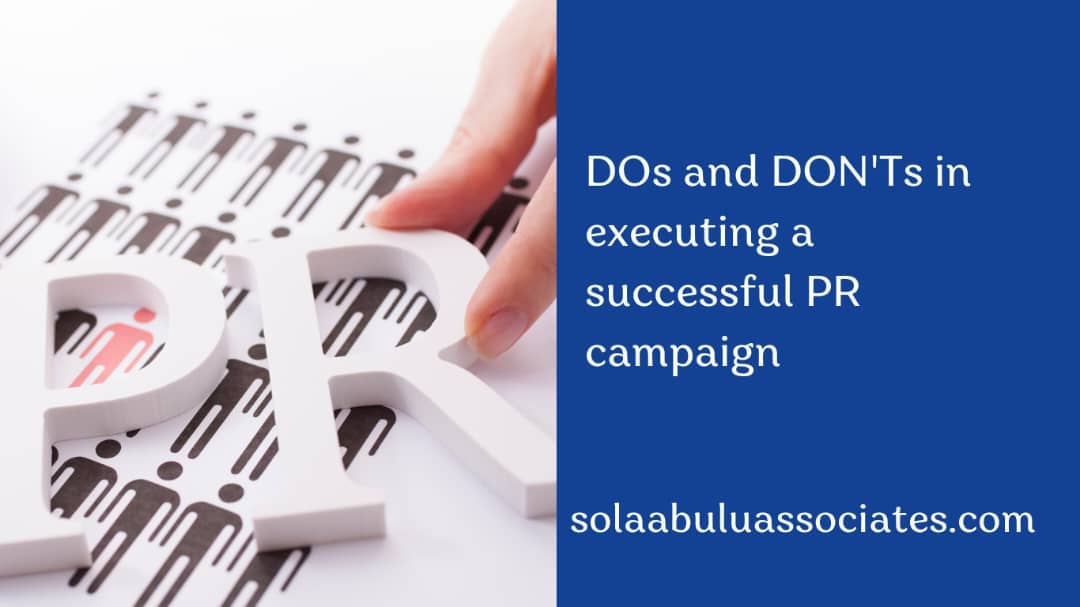Public Relations Campaigns: Best and Worst Practices

An effective public relations campaign in today’s world should provide helpful data insights and must be strategic. This strategy will be visible in how the campaign is set to target a specific audience. Issuing press releases or just running any kind of PR campaign is ineffective because strategic communications is at the heart of any successful PR campaign. Successful PR campaigns utilize a mix of channels to meet their target audience. These channels include all forms of traditional and digital media.
Every business, organization or entity that needs to shape its brand perception and drive both online and offline awareness of its services needs to utilize best practices in its PR campaigns. This means that there are equally bad PR campaigns that can contribute to a negative brand perception. This article explores the best and worst practices in creating PR campaigns, especially in the social media era where brand reputations are easily ruined.
Best Practices for PR Campaigns
Sola Abulu, our Principal Consultant explains 5 reasons why 80 per cent of startups fail from a PR point of view in this video.
- What is the objective of your campaign? A PR campaign can be geared towards several objectives like brand awareness/visibility, website traffic, educating the public or generating/ converting leads. Every brand that is in business to make sales will have that as an ultimate goal; however, PR campaigns should have specific goals that can be measured to analyze its impact.
- Define the target audience: The target audience will determine the effectiveness of a campaign. For example, a content that is created specifically for industry professionals is better off on a digital platform like LinkedIn but when the content is meant to reach the younger and more exciting group of stakeholders, Instagram, facebook or Tiktok can be used. Knowing your target audience is highly important in the success of any PR campaign. It can require market research that determines age range, interests, location, etc. The result of identifying your target audience first is that the PR campaign will resonate more effectively with them.
- Storytelling: A PR campaign should tell a story. Every strategic communication effort should be able to evoke emotions of care and concern. Storytelling is a useful tool in public relations that aids the target audience in better assimilating the message of your campaign and share a connection. This is why humanized content can be useful in a PR campaign to connect with stakeholders.
- Understanding a mix of multiple channels: It becomes important that public relations professional understand that social media is not the only channel where stakeholders can be reached. A PR campaign that targets industry veterans or a more mature (age demography) stakeholder group, utilizing the traditional media or one-on-one activities is more effective than a social media campaign. Therefore it is best practice to understand which channel reaches the target audience.
- Analyze results: The reason why campaign objectives are set is to enable the measurement of its results. Did the campaign achieve an increase in website traffic, more visibility/engagement or did it generate as much sales as was expected? Monitoring the result of a PR campaign will help the strategy for future campaigns.
When Apple launched its Shot on iPhone campaign, it leveraged user-generated content to show why the device’s camera is a good buy. This is a unique storytelling narrative that easily helps the target audience which is an elitist population, see why they need to brand’s product.

Worst Practices to Avoid
This article on The Silent Killer of Big Companies by Harvard Business Review is a case study of the fall of Nokia, a one-time leading mobile phone maker.
- Neglecting social listening: Social listening has become most important in the social media age where every social media user has a say on a brand’s activity. Social listening tools like Hootsuite are useful to monitor where a brand or entity is mentioned. In situations where there is an issue, it can be resolved early to stop escalation.
- Unpreparedness for crisis: Crisis management begins before a crisis. Not having a crisis response team or crisis communication strategy to proactively prepare for and manage a crisis is very harmful to any brand’s growth and reputation.
- Focus on sales alone: As stated earlier, even though reputation is a hard currency, many brands exist to make sales. However, when a brand focuses all its PR campaigns on only sales, it loses out on the emotional connection it should build with its customers, both existing and potential. PR campaigns can be educative, entertaining, and can also aim at building positive relationships with stakeholders.
Creating public relations campaigns needs to be more strategic to be described as best practice and this is achieved by setting goals, identifying a target audience, measuring the set goals, etc.
Are you interested in learning about strategic communications? Here is a good start!
You can also catch up on our last blog on Media Relations Today.
We have also announced our Public Relations, Media and Stakeholder Management Course.
You should enrol especially if you are new to the media management space.
:
As with all our courses, we run discounts as follows:
-30% in the first week from May 1 – May 8
– 15% from May 9 – 16, 2024
Full course price applies from May 17 till end of registration on May 28, 2024.
